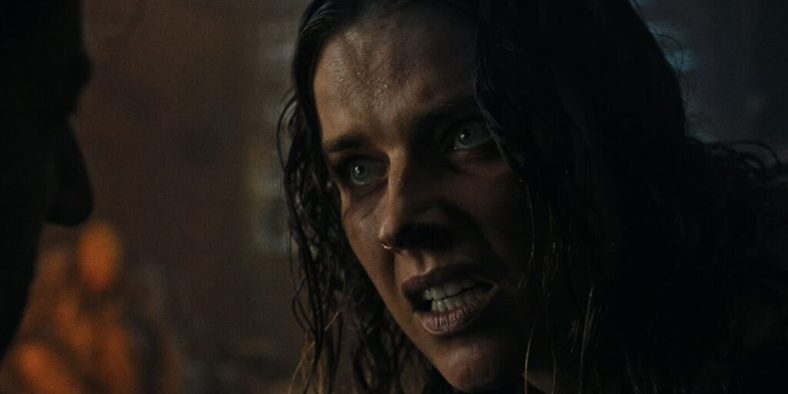‘Black Mold’ Review: An Urban Exploring Nightmare [Panic Fest 2023]

Horror can be such a tease. John Carpenter once expounded on what he considered to be two different kinds of horror stories, the internal and the external. External is the monster in the dark. It’s the man in the mask with the big knife. Internal horror is of the heart. It’s the way our bodies trick us into inviting evil, actualizing it. John Pata’s (editor on The Stylist) Black Mold, where he pulled triple duty as director, writer, and editor, ostensibly wants to generate its scares internally.
Opening with a trauma flashback of protagonist Brooke (Maisie Merlock), Black Mold endeavors to draw a thematic throughline from her past fear to her present-day assignment; photographing abandoned buildings as a quasi-urban explorer. Older Brooke (Agnes Albright) seems unwell. On edge. A little more frightened than she should be. Black Mold looks, at first, to be psychologically driven. It’s a woman in old buildings confronting old ghosts. Only, it really isn’t. John Pata has the horror credentials. And Black Mold yields some noteworthy scares, but it never probes deeply enough into the mind of its lead. Resultantly, it’s a funhouse of jolts with no connective tissue.
Also Read: ‘Blue Hour’ Panic Fest 2023 Review: Impressive Sci-Fi Found Footage
As mentioned, Albright’s Brooke and histrionic friend Tanner (Andrew Bailes) are building their respective photography portfolios. Pata’s camerawork is fluid and digital, nicely capturing the way the light falls on decrepit structures juxtaposed against a ragtag pair of artists. Friend CJ (Caito Aase) drives the getaway car, perhaps absconding to the motel bar in-between shoots (Brooke suggests CJ leave each scene to avoid being caught). Early dialogue is serviceable. Black Mold plants seeds for later scares, however arbitrary they are in the context. Later in the film, Black Mold will definitely trade in childhood fears. It has to, of course, given how much time is dedicated to Tanner discussing his fear of scarecrows.
Baby gigs give way to Franklin Hill, a government facility Brooke is desperate to photograph. The colossal structure is several buildings wide, accounting for Brooke’s rough estimate that she and Tanner need at least 3 hours to finish. CJ leaves them in the middle of nowhere and the two set off. It’s all introductory, at times frustratingly so. Brooke mentions a nebulous grant, Tanner is thrilled, yet this requisite information comes too late. A reasonable amount of runtime has passed, yet the audience still isn’t clued into the major threat or internal motivation for Brooke wanting to be at this building in particular.
A threat does arrive, though it’s a misdirect. As a result, Tanner and Brooke must spend the night at Franklin Hill, grappling with physical threats and psychological ones. No wonder—CJ jinxed them. What if that moldy air messes with your brain and causes you to see stuff that isn’t really there?
Also Read: ‘Laced’ Wants You to Murder Your Husband [Panic Fest Review 2023]
And the characters do… or don’t. Pata effectively teases the external hallucinogenic horror as Brooke and Tanner amble about the facility, encountering jolt after jolt, incapable of distinguishing between what’s real and what isn’t. While the descent would have been more effective with any semblance of patience or foreshadowing—the visions simply seem to happen—they’re no doubt effective. Pata digs deep into a bag of horror tricks, making great use of thunderstorms, floating specters, and figures spotted right at the edge of the frame to incite terror.
Otherwise, Black Mold fumbles the ending. It’s a lot that doesn’t sufficiently wrap any of the several disparate threads together. It teases something sinister and internal, yet its most pronounced elements are haunted house frights. Pata has managed an effective horror yarn with a committed cast, but the feel of replaying the genre’s greatest hits hurts it in the end. The abandoned building and hallucinations are scary, but they’re been there, done that. Without the internal grounding, Black Mold is good when it could have been great.
-
Black Mold
Summary
Black Mold might be familiar, but writer director John Pata has an undeniable flair for horror convention.

